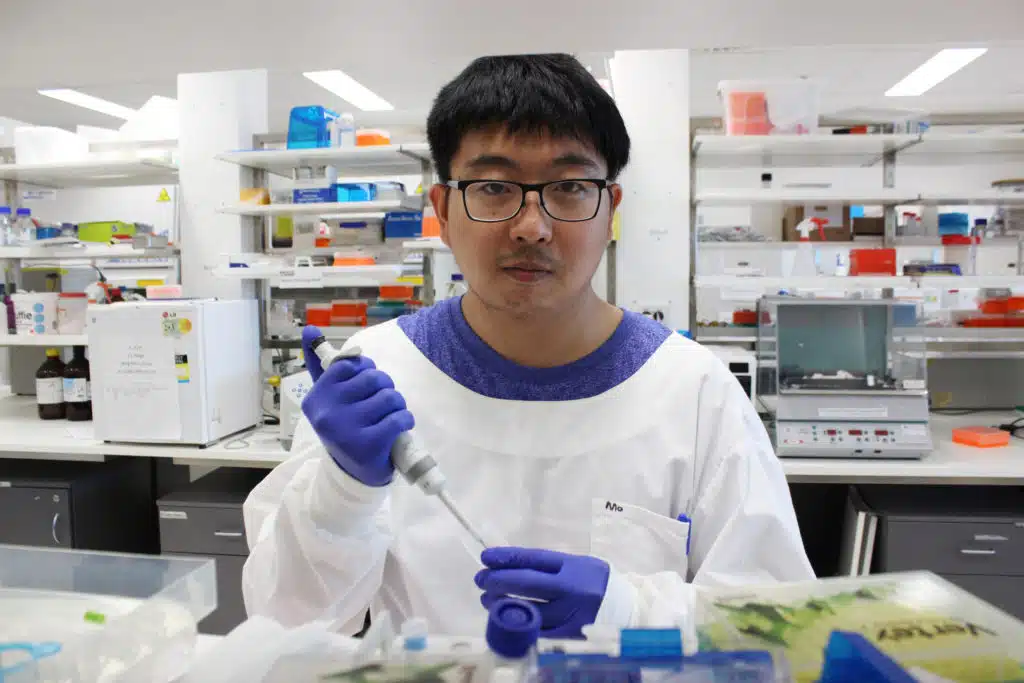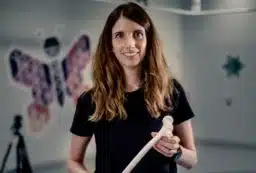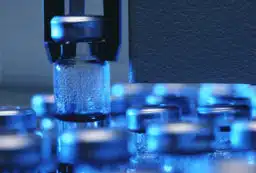Researchers have designed a new way to grow nose cells in the lab heralding hope for sufferers of spinal cord injuries, including those who are wheelchair bound.
Griffith University’s Mr Mo Chen grew nose nerve cells in the lab, which can treat mice with spinal cord injuries.
“My colleagues placed the nerve cells into mice that were suffering from spinal cord injuries,” says Mr Chen. “The mice quickly recovered and could walk again, but we’re still working on improving the therapy”.
One of the difficulties of this kind of research is growing cells effectively in the laboratory.
“Our bodies are 3D not 2D so the best way of growing cells in the lab, is 3D,” says Mr Chen.
“With our method we can grow healthier 3D cultures in a shorter time.”
Researchers at Griffith University have developed a system using “naked liquid marbles” where cells can grow in an environment that simulates the body.
Nerve cells in the nose are regularly exposed to trauma making them very robust.
“These nasal cells heal better than many other nerve cells which makes them ideal to treat damaged spinal cords,” says Mr Chen.
Researchers used cells supporting the ‘olfactory’ nerve cells, which create our sense of smell.
“We found that growing olfactory cells on the naked liquid marbles worked particularly well and we can grow very large 3D spheres of cells with a diameter up to 3 mm.
“These spheres of cells can self- assemble into tissues. These tissues are very strong so can be handled and transplanted easily into spinal injury sites.”
While the results have been positive for mice, spinal cord injuries in humans are more complex. But this research paves the way for clinical trials anticipated to begin in 2020, using nasal cells from spinal cord injury sufferers and giving hope to many that they may walk again.
Mr Chen won the 2018 Fresh Science People’s Award (Queensland) for his work—the competition is national and helps early-career researchers find and share their stories of discovery.
Fresh Science takes up-and-coming researchers with no media experience and turns them into spokespeople for science, giving them a taste of life in the limelight, with a day of media training and a public event in their home state.
Fresh Science Queensland is presented by Econnect Communication, the Queensland Government, Queensland University of Technology, the University of Queensland and Griffith University.
Paper to reference
“The serrulatane diterpenoid natural products RAD288 and RAD289 stimulate properties of olfactory ensheathing cells useful for neural repair therapies” Chen et al. (2018)
Scientific Reports volume 8, Article number: 10240
For interview
Mr Mo Chen, PhD candidate, School of Environment and Science
Griffith Institute for Drug Discovery and Menzies Health Institute Queensland
mo.chen@griffithuni.edu.au, phone: +61 425 532 026
Associate Professor James St John, Head of the Clem Jones Centre for Neurobiology and Stem Cell Research, Griffith University, Griffith Institute for Drug Discovery and Menzies Health Institute Queensland
j.stjohn@griffith.edu.au, phone +61 7 3735 3660
Media contact
Jenni Metcalfe, Econnect Communication, jenni@econnect.com.au, phone +61 408 551 866
Matt McGrath, Marketing & Communications Coordinator, Griffith University, matt.mcgrath@griffith.edu.au, phone +61 7 5678 0325





 Fresh Science is on hold for 2022. We will be back in 2023.
Fresh Science is on hold for 2022. We will be back in 2023.